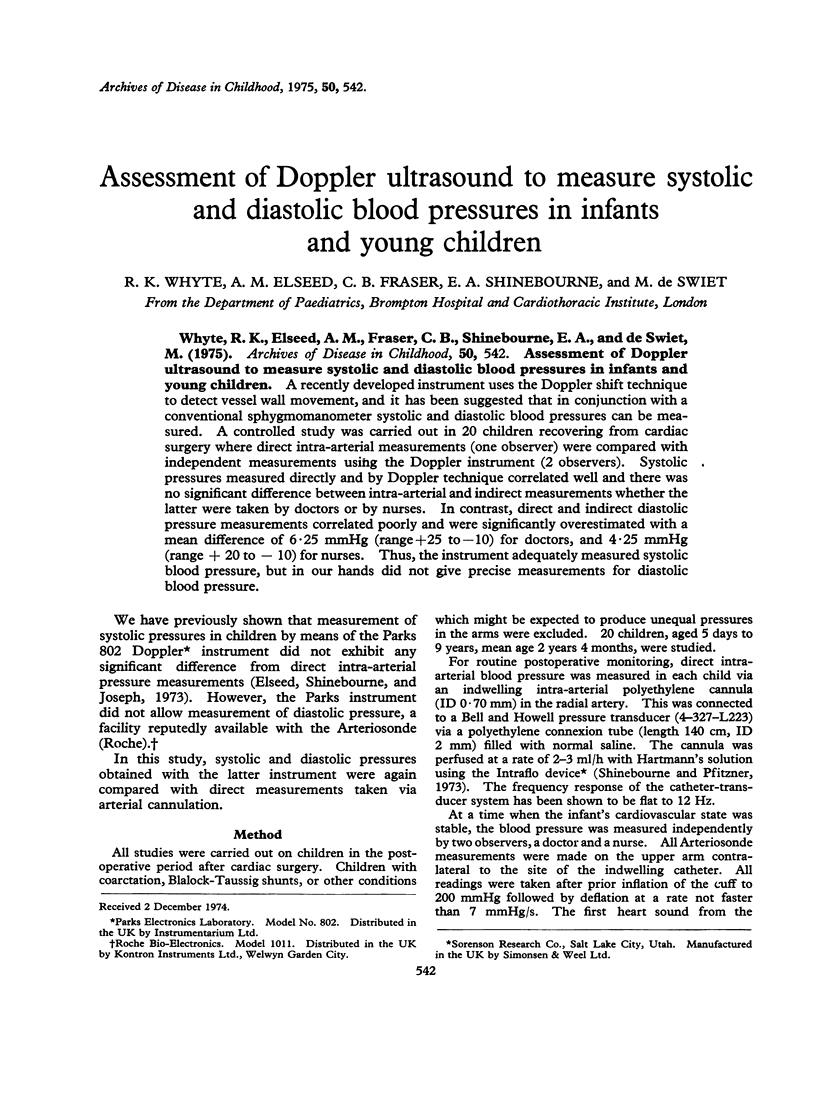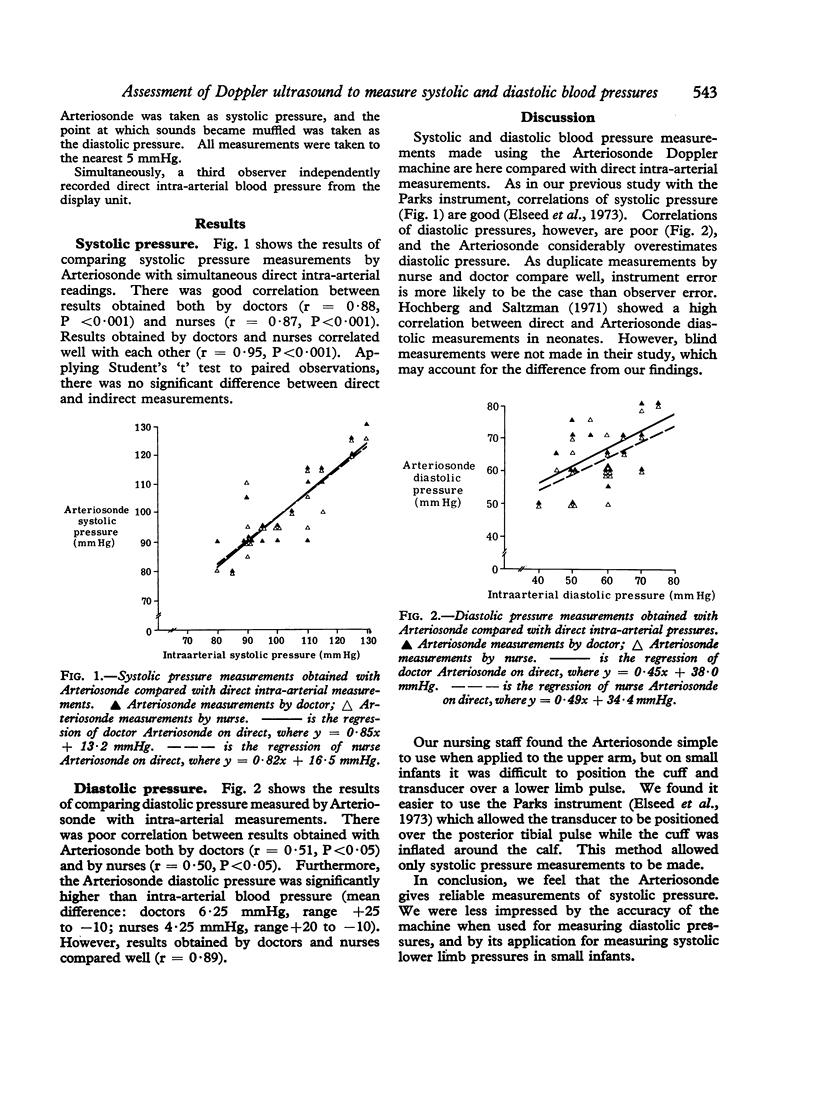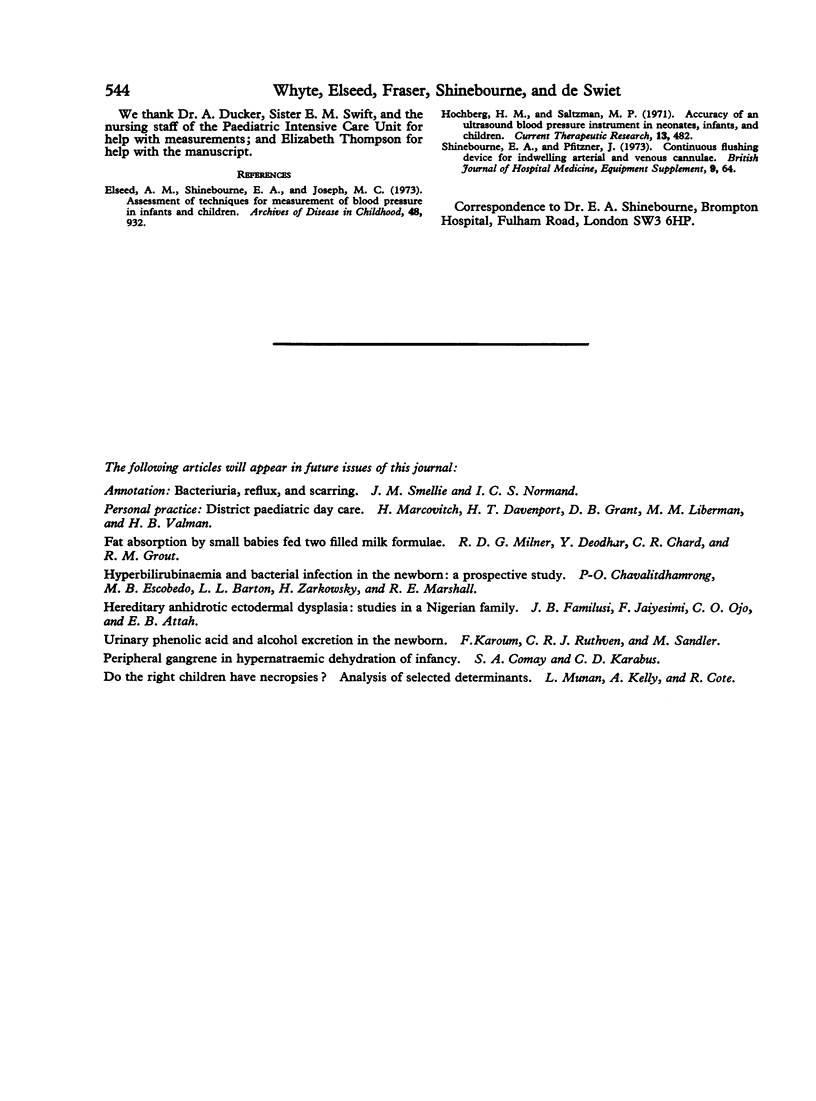Abstract
A recently developed instrument uses the Doppler shift technique to detect vessel wall movement, and it has been suggested that in conjunction with a conventional sphygmomanometer systolic and diastolic blood pressures can be measured. A controlled study was carried out in 20 children recovering from cardiac surgery where direct intra-arterial measurements (one observer) were compared with independent measurements using the Doppler instrument (2 observers). Systolic pressures measured directly and by Doppler technique correlated well and there was no significant difference between intra-arterial and indirect measurements whether the latter were taken by doctors or by nurses. In contrast, direct and indirect diastolic pressure measurements correlated poorly and were significantly overestimated with a mean difference of 6-25 mmHg (range +25 to -10) for doctors, and 4-25 mmHg (range +20 to -10) for nurses. Thus, the instrument adequately measured systolic blood pressure, but in our hands did not give precise measurements for diastolic blood pressure.
Full text
PDF


Selected References
These references are in PubMed. This may not be the complete list of references from this article.
- Elseed A. M., Shinebourne E. A., Joseph M. C. Assessment of techniques for measurement of blood pressure in infants and children. Arch Dis Child. 1973 Dec;48(12):932–936. doi: 10.1136/adc.48.12.932. [DOI] [PMC free article] [PubMed] [Google Scholar]
- Hochberg H. M., Saltzman M. B. Accuracy of an ultrasound blood pressure instrument in neonates, infants, and children. Curr Ther Res Clin Exp. 1971 Jul;13(7):482–488. [PubMed] [Google Scholar]


